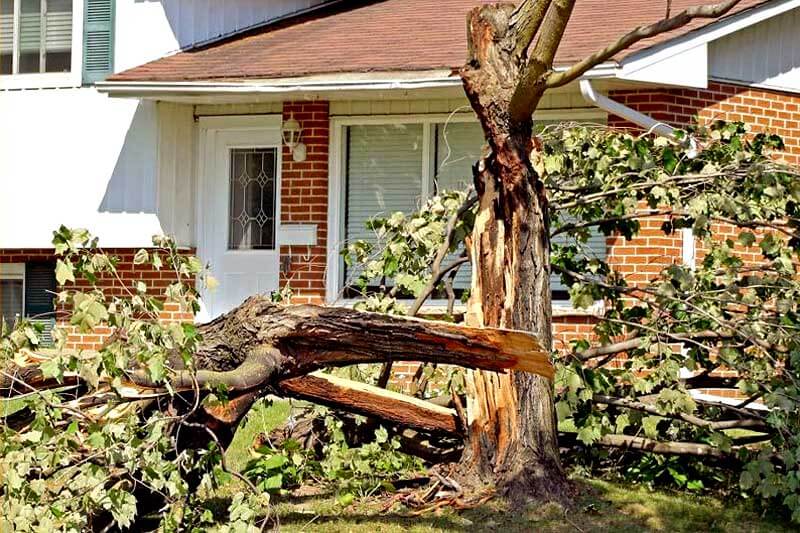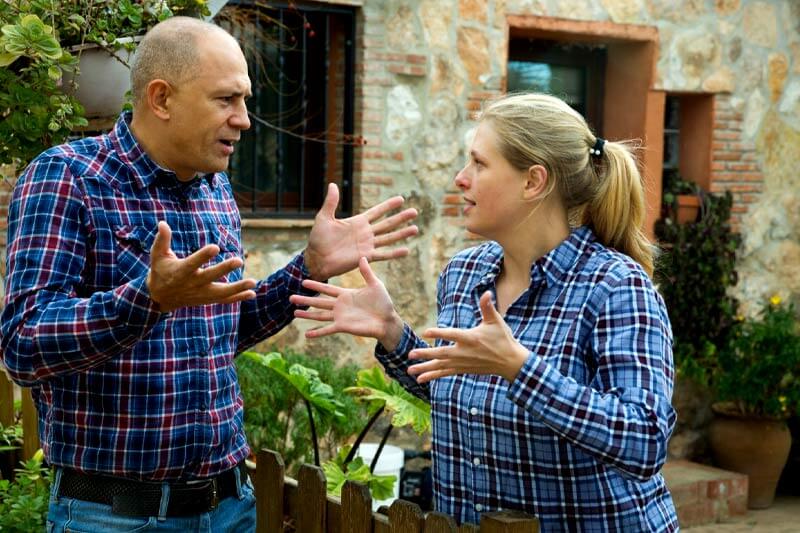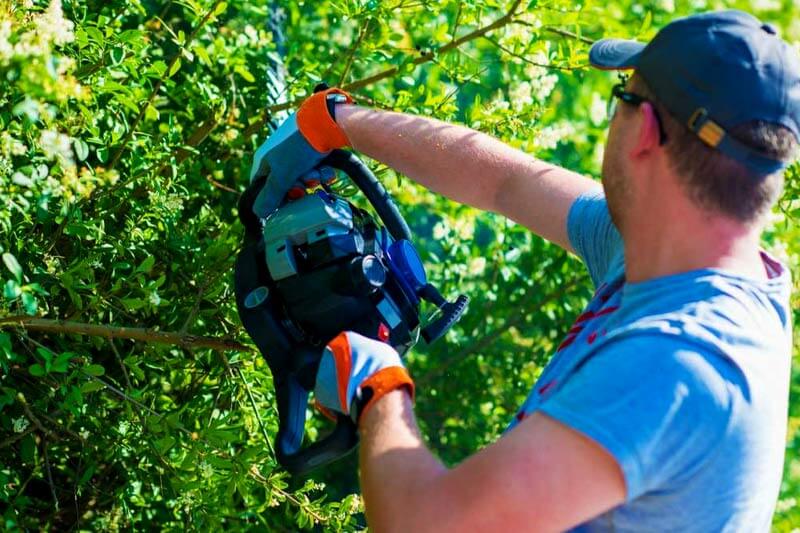When a neighbour’s tree falls onto your property and causes damage to a fence, shed, or your home, you may be wondering who is liable.
If your neighbour’s tree damages your property, he is not automatically liable for fixing the damage. Here are two scenarios to explain further.
- If the tree is rotten and prone to hazards, your neighbour will be liable for the damage.
- If the tree’s fall is unexpected because of a storm or other event and the tree appears healthy, your neighbour will be vindicated.
What we are really talking about is whose insurance company is going to cover the damage. This will depend on your insurance company and the policy you have. If you don’t have the coverage, you’re neighbour’s insurance company should come to the party and pay.

Table of contents
ToggleDoes homeowners insurance cover the neighbor’s tree damage to my property?
In short, yes. You should be able to get your home insurance to cover the bill, but I would ask your neighbor to check with their insurance first. If their insurance company refuses to pay because of some crazy little loophole, then get your insurance company to pay and approach your neighbor about covering, or splitting the premium.
It is common to think that your neighbor is automatically responsible to fix the damage caused by their tree to your property. After all, it’s their tree!
Here are two scenarios to help you understand when homeowners insurance covers tree damage to your property.
Neighbor is aware of tree’s condition
If the fallen tree has been in a dangerous condition or is known to always drop branches, your neighbour may be liable to you. For your neighbour to be liable for the damage, he needs to be aware that the tree is close to your property and is in a dangerous condition. If applicable, he must also know that the tree belongs to a species known to ‘drop’ branches.
If your neighbour knows all of this, he is most likely exposed to liability. His insurance company is thus responsible for taking it up.
‘Act of God’
If the fallen tree is healthy, your neighbor is not liable because this is an ‘act of God’. If a strong, healthy tree falls on your property due to a storm or any unexpected condition, then your insurance company should be notified to come to the rescue.
The exact wording of your insurance policy is paramount in determining who is liable, but generally speaking; it is common to have your homeowners’ insurance cover the damage.

Can I force my neighbor to cut their trees?
You cannot force your neighbor to cut it down if the tree is healthy without harming you or your structure.
However, if the tree becomes a threat, you can discuss the topic with your neighbor during an informal chat. You need to explain your concerns about the tree, its risks, and whether they can be open to removing it.
You may start by suggesting a trim or offering incentives such as paying for the removal or offering to replace it with another tree.
If you’re not able to cope at all and your neighbor is uncooperative, you may inform your local authority and have them take legal action.
Can I trim a neighbor’s tree on my property?
You have the right to trim branches and limbs that extend past your neighbor’s property line.
However, the law only allows tree trimming and tree cutting up to the property line. You are not expected to enter the neighbor’s property or destroy the tree. You may have to pay for damages if you harm the tree without the owner’s consent.
Meanwhile, it will be cool to approach your neighbor and explain why you need to trim the part of the tree that extends to your property. He may even cover the cost or give the tree complete trimming treatment.
Who is responsible if the council’s trees damage your property?
Council trees are usually protected and maintained by the local council. If a tree belonging to the local council is becoming a threat to your house, you should report the issues immediately through available channels. You’re not expected to trim or remove such a tree without their consent.
If any of such trees cause any damage to your property, you should report this immediately. The council will most likely send a representative and a council arborist over to assess and take care of the damage.
However, you must be certain that the tree belongs to the council, not your neighbor. Such a tree should be completely on public land, and you should make a report about it as required.
Your home insurance may also pay for damage caused by council trees.

Can you trim a Council tree on your property?
Removing or trimming a council tree without getting written permission is illegal. Council trees sit on public land and belong to the council. Your local council is responsible for maintaining the trees’ health and safety.
If a tree poses any danger or hangs over your house, you must notify the relevant office immediately, and they will take the appropriate action. Trimming or removing council trees without permission usually attracts hefty fines or prosecution.
Laws for removing or trimming council trees vary from one city or town to another in Australia. However, authorities likely require you to report any issue to your local council office before doing anything to a council tree. Removing or trimming council trees without permission usually attracts fines or legal action.






